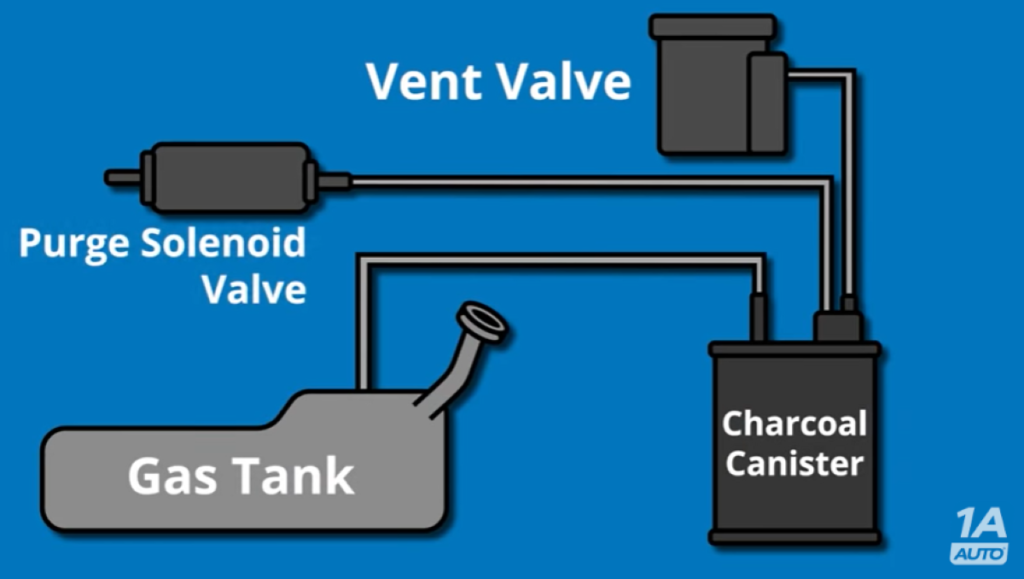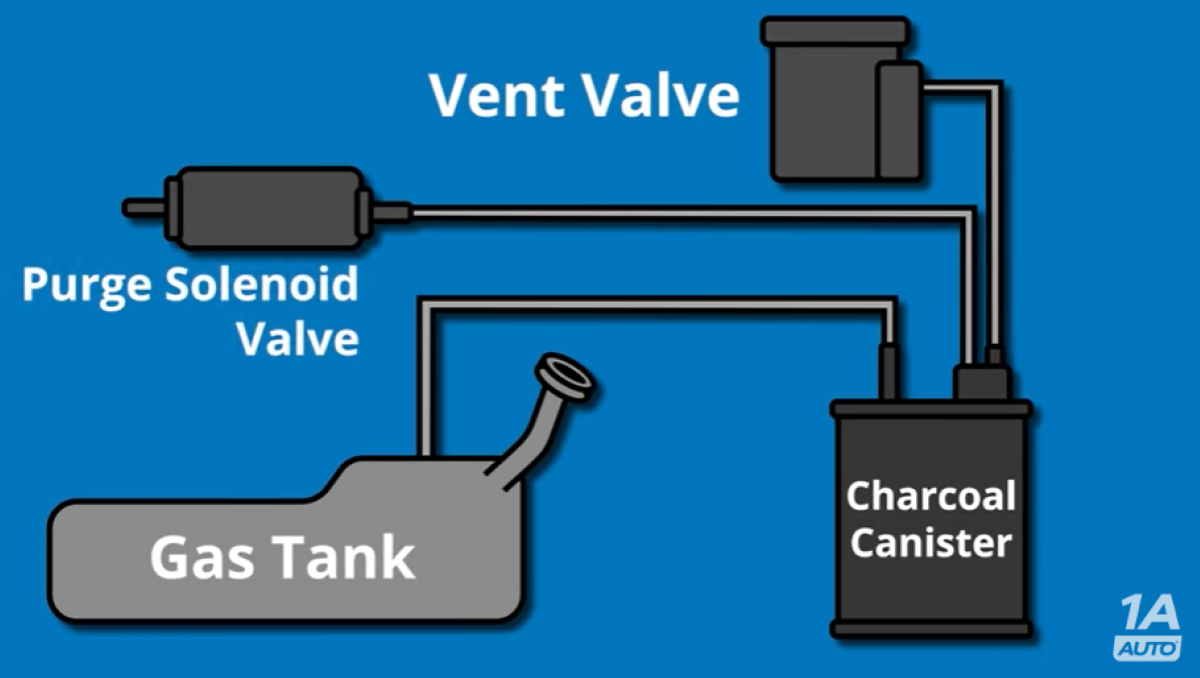If you have an EVAP leak, symptoms like a check engine light for an EVAP leak code, like P0442 or P0455, or other signs like a cracked charcoal canister will appear. We review what parts to check and how to tell if your car has an EVAP leak or if you just need to do something simple like re-tighten the gas cap.
Symptoms of an EVAP Leak

Evaporative (EVAP) emission control systems are a common reason for a check engine light. Sometimes there’s an easy repair, and sometimes it’s a more detailed fix. If you scanned your car with a scan tool and have an EVAP code, these parts of the EVAP system can cause a leak. We’ll review what to look for and what symptoms these parts of the EVAP system will show if a leak is present.
Parts That Can Cause an EVAP Leak Code
- Purge valve
- Vent valve
- Charcoal canister
- Gas cap
- Gas tank
1. Loose or Broken Gas Cap or a Rusty Fuel Filler Neck
Depending on the vehicle, if there’s an issue with the gas cap, you may not have check engine light but receive a message on the dash to check the gas cap. Regardless, if the gas cap isn’t tightened securely, it can turn on the check engine light. Sometimes this can be fixed by simply retightening it.
Shake the gas cap see if it’s loose and needs to be tightened. Every gas cap is different. For example, if the gas cap should click when turned but it doesn’t click or cinch down, you know you have an issue. It might be a one click or ratchet-type, but if it’s not working as usual you may need to replace it. Remove and check the gas cap seal for cracking, dry rotting, or broken pieces, and replace the gas cap if seal is damaged.
Check fuel filler neck for excessive rust build up, as that can trigger an EVAP code as well.
More on how to inspect the gas cap
2. Gas Tank – Code for an EVAP Leak (Uncommon)
It’s not common for the gas tank to have a leak that’ll turn on the check engine light for an EVAP code. While there is gas in the gas tank, there is also fuel vapor. The purpose of the EVAP system is to keep fuel vapor from leaking into the atmosphere, so the system needs to be sealed.
There may be issues at the top of the tank, like a loose line, or rust build-up. The fuel vapors need to escape the tank, and they will go to the EVAP canister.
3. Charcoal Canister – Code for an EVAP Leak or Trouble Filling the Gas Tank
Fuel vapors travel in a hose that connects from the top of the gas tank to the charcoal canister. The charcoal canister has charcoal to trap the fuel vapors.
There are two reasons the charcoal canister could fail. It could have a crack from the plastic brittling over time. This will cause a leak and turn on the check engine light. It could also plug up solid, leaving vapors stuck in the canister. This will cause problems pumping gas. The gas will stop filling frequently, and you’ll have to keep pumping it because there’s no where for the vapors to escape. The vapors stuck in canister need to vent off the pressure.
4. Vent Valve – Code for an EVAP Leak
A hose connects from the charcoal canister to the vent valve. The computer can open and close the vent electronically if it needs to seal or vent the EVAP system. Most of the time the vent valve will fail in the closed position where it’s not sealing properly and system interprets a leak. This is often due to road salt or sand that can sneak inside. The vent valve might have another hose to try and eliminate some of this debris, but it can still stick. It’s also possible for a critter like a spider to sneak inside and build a nest, giving the system a false reading that the valve is sealed.
5. Purge Valve – Code for a Small EVAP Leak
A hose connects from the charcoal canister to the a purge solenoid valve at the front of the vehicle. It takes vacuum from the intake of the engine, and the computer can open and close it electronically. Like the vent valve, when it fails it’s usually because it’s not sealing properly. More often then not, it will send a code for a small leak (P0442) or a fuel vapor purge when not required (P0496).
Learn How to Diagnose More Parts
Learn how to replace and diagnose more parts with how-to videos in 1A Auto’s video library. Our expert tips can help you learn how to diagnose and replace many different parts.
Shop Quality Auto Parts





